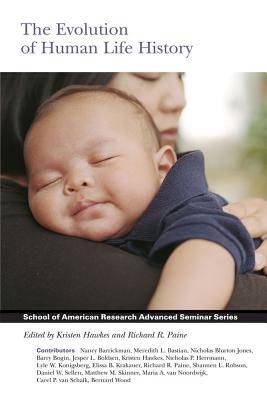
- Afhalen na 1 uur in een winkel met voorraad
- Gratis thuislevering in België vanaf € 30
- Ruim aanbod met 7 miljoen producten
- Afhalen na 1 uur in een winkel met voorraad
- Gratis thuislevering in België vanaf € 30
- Ruim aanbod met 7 miljoen producten
The Evolution of Human Life History
Kristen Hawkes, Nancy Barrickman, Meredith L. Bastian, Nicholas Blurton Jones, Barry BoginOmschrijving
Human beings may share 98 percent of their genetic makeup with their nonhuman primate cousins, but they have distinctive life histories. When and why did these uniquely human patterns evolve? To answer that question, this volume brings together specialists in hunter-gatherer behavioral ecology and demography, human growth, development, and nutrition, paleodemography, human paleontology, primatology, and the genomics of aging. The contributors identify and explain the peculiar features of human life histories, such as the rate and timing of processes that directly influence survival and reproduction. Drawing on new evidence from paleoanthropology, they question existing arguments that link humans' extended childhood dependency and long "post-reproductive" lives to brain development, learning, and distinctively human social structures. The volume reviews alternative explanations for the distinctiveness of human life history and incorporates multiple lines of evidence in order to test them.
Specificaties
Betrokkenen
- Auteur(s):
- Uitgeverij:
Inhoud
- Aantal bladzijden:
- 524
- Taal:
- Engels
- Reeks:
Eigenschappen
- Productcode (EAN):
- 9781930618725
- Verschijningsdatum:
- 28/08/2006
- Uitvoering:
- Paperback
- Formaat:
- Trade paperback (VS)
- Afmetingen:
- 152 mm x 221 mm
- Gewicht:
- 762 g

Alleen bij Standaard Boekhandel
Beoordelingen
We publiceren alleen reviews die voldoen aan de voorwaarden voor reviews. Bekijk onze voorwaarden voor reviews.











